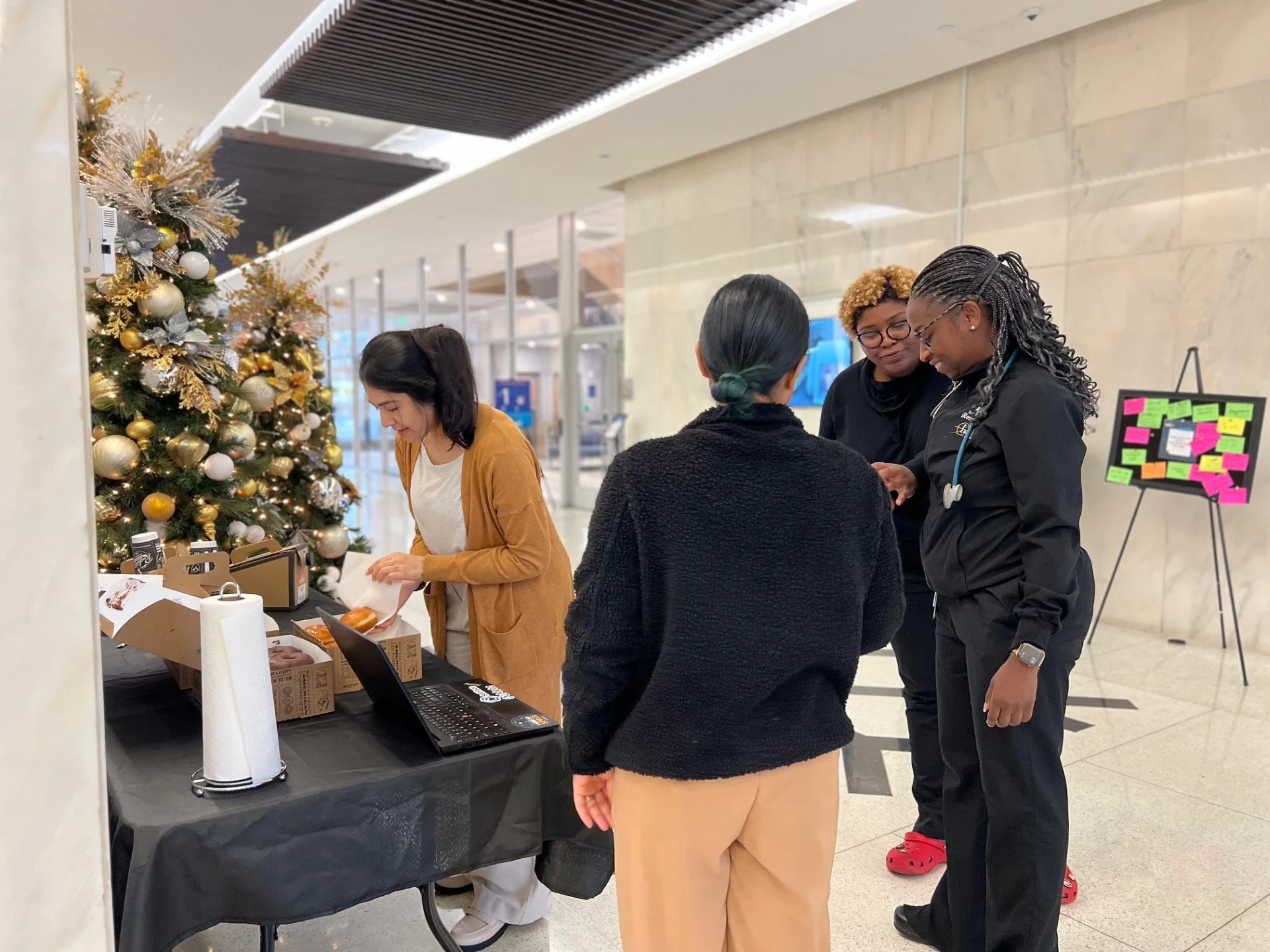A staggering 80 percent of rural counties are considered medically underserved, so many hospitals and medical schools (like Emory!) are creating programming to attract young talent to aid in bridging the physician gap. To discuss this topic further, we invited our community members (many of which are involved in healthcare) to join us in the Ponce lobby for a Coffee Talk: Rural Healthcare Access.
Attendees from the Emory School of Nursing (ESON), iResearch Atlanta, and Utility enjoyed complimentary coffee and doughnuts while conversing with one another regarding rural healthcare access. In terms of changes that could be made, participants touched on more funding, better infrastructure (transportation services and additional hospitals), and having remote/mobile clinics, to start.
Incentivizing healthcare professionals and students to go to those underserved areas is also paramount. It was evident that people are passionate about finding a solution, but are struggling due to a lack of resources and benefits for caregivers to relocate to these areas.
That’s where the Emory Rural Tele-EMS Network (ER-TEMS) comes into play. With a $1.2 million grant from the Health Resources and Services Administration (HRSA) in 2021, Georgians in rural counties who need emergency medical care now are able to be seen by Emory Emergency Medicine doctors and specialists, even before they reach a local hospital.
Even with the grant, there still doesn’t seem to be enough money to resolve every issue. Morgan Thibodeaux, a nursing student at ESON, shared her thoughts that if there isn't funding to build new clinics in remote areas, programs should be developed for mobile health. In this situation, healthcare providers would travel to rural areas on a regular basis with the technology and supplies needed to treat patients.
This idea could help more than the 60 million Americans who have to travel 20 miles farther than urban residents for common health care services, and about 40 miles farther for specialty services.
As ideas continued, it was inspiring to witness a shared interest amongst tenants and watch them brainstorm solutions to a common issue. After all, coming together for a cause is what community is all about.




